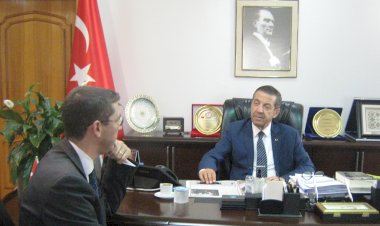Endangered seal breeding in TRNC

Taken from this week's issue
By GÜLDEREN ÖZTANSU
The study by the UK’s University of Exeter and the TRNC’s Society for the Protection of Turtles (Spot) confirms previously unknown breeding sites of the endangered Mediterranean monk seal, of which fewer than 700 are believed to exist. It holds the title of the rarest seal in the world.
Details of the research concerning the International Union for Conservation of Nature (IUCN) “Red List” seal species were this week revealed in the peer-reviewed international conservation journal Oryx, published by Cambridge University Press.
It was previously known that there are 39 seal caves in the TRNC, but only eight of these are suitable for breeding. The study explored three previously confirmed caves and five potential monk seal “haul-out” caves with “camera-trap” surveys between 2016 and 2019, during the pupping period. This method was used for the first time in North Cyprus.
Dr Robin Snape, of the Centre for Ecology and Conservation on Exeter’s Penryn Campus in Cornwall, said: “This area of coastline is being developed rapidly, especially for construction of hotels.
“A survey of the coast in 2007 found 39 possible breeding caves, and some of these have already been destroyed.
“The main breeding site we identify in this study currently has no protected status, and we are working with local authorities to try to change this.”
Four adult/sub-adult seals and three seal pups were identified in three of the eight caves monitored with camera traps. In one particular cave on the north-west of the island, pupping was recorded for three consecutive years and the site was observed to support at least three adult/sub-adult seals.
The report states that Yeşilırmak, in the west of the TRNC, is an important focal point for the population as it is an annual breeding site and has hosted at least three individual seals. Even though the site is not perfectly suitable for breeding, as only one of the three monitored pups survived to post-moulting, the coast east of the cave includes inaccessible beaches where a pup was observed to haul out and rest.
The report calls for extensive and continuous monitoring and conservation across the island to be made a priority given that the eastern Mediterranean population of the species is in the low hundreds with “reduced genetic diversity”.
It is noted that Mediterranean monk seals benefited from open beaches to rest and breed in the past, but they have been drawn to “suboptimal sea cave habitats” due to human pressures.
The report’s lead author Dr Damla Beton, of Spot, said: “Another major threat to monk seals in this area is bycatch (accidental catching by fisheries).
“We are working with fishers and government ministries to ensure protection areas at sea, because at present no measures are implemented to mitigate bycatch in the core areas used by these seals.” No-one from the Environment Protection Office was available for comment.
The study was carried out in collaboration with the Middle Eastern Technical University with the support of the local authorities, and received funding from the Swiss-based Mava Foundation.




